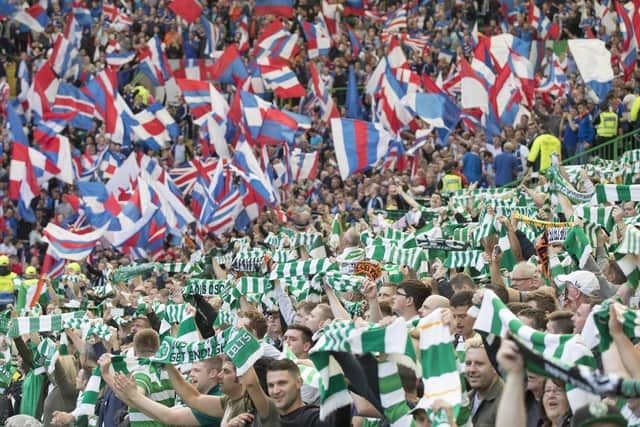The Rangers versus Celtic football rivalry explained - Dr Joseph Bradley
Recognising the importance of events, processes and phases of Scottish/British imperialism, especially in relation to Ireland, contributes to a more informed understanding of the rivalry between Rangers and Celtic, as well as throwing light on contemporary postcolonial, identities in Scotland.
The Great Tapestry – unveiled in 2013 in the Scottish Parliament is a multi-panel representation of Scotland’s history, commissioned and sanctioned by Scotland’s devolved government. Thirty-four thousand visitors initially attended its display, and many more in later exhibitions around the country. However, its minor reference to football in Scotland reflected how dominant representations of the so called ‘Old Firm’ betrays an ignorance of that very subject.
Advertisement
Hide AdAdvertisement
Hide AdThe Great Tapestry of Scotland journeys from the first millennium to the Scottish Protestant Reformation of the 1560s, and from that epochal event to the creation of the Scottish Parliament in 1999. Among hundreds of imaginative images two reference football. The first international football match played between Scotland and England in 1872 is mentioned and recognition is given to some of Scotland’s oldest soccer clubs. Rangers (1872) and Celtic (1887–88) are on a panel alongside a note about the first ‘Old Firm’ match in 1888.


One of the two panels incorporates a note about the country’s single largest ethno-religious community: Irish refugees arriving in Scotland [mainly] as a consequence of the ‘Great Hunger’ of 1845-51. However, its title offers an indication of a much wider issue regarding interpretations of parts of Scotland’s modern history. The title, ‘Irish Immigration after the Famine: Founding of Celtic and Rangers Football Clubs’. This directs viewers towards Ireland for the explanation and cause for ‘sectarianism’ in Scotland.
Framing the roots, cultures and identities of both Celtic and Rangers as originating from Ireland, and what are constructed as ‘Irish’ events, is highly misleading and dishonest. In actual fact, Rangers emerged from within Scotland’s indigenous community via the energies and initiatives of football enthusiasts’ native to Scotland. The relevance of the Great Hunger to sport in Scotland lies mainly in the emergence of Celtic, who grew to become the pre-eminent football club of the Irish-Catholic diaspora there and elsewhere.
It is clear the narrative affirmed in the Great Tapestry of Scotland reflects and reproduces a conventional and influential construction of the history of Celtic and Rangers together as the ‘Old Firm’. Significantly, this points primarily to Ireland as the source of Scotland’s ethno-religious complexity and ‘problems’, informing and reflecting wider media and political interpretations and constructions of ‘sectarianism’ in society. So, for example several years ago an MSP stated that, ‘sectarianism’ in Scotland was ‘born out of the history of Ireland’. One of the country’s main broadsheet newspapers said that ‘sectarianism’ in Scotland was a mindset rooted in the poverty and violence of Northern Ireland, ‘imported to the west of Scotland by 19th century migrants’.
The Great Tapestry, with validation offered by the Scottish government, much advocated in the popular press, displayed in several mass exhibitions, and visited by many people, including tens of thousands of school children, enshrines, and educates with respect to, a version of the past by offering particular representations of modern Scottish football history. More broadly, reflecting the narrative of sectarianism, the tapestry reiterates and promotes the received wisdom that the source of Scotland’s ethno-religious, cultural, community and football problems lies outside of Scotland, that is, in Ireland.